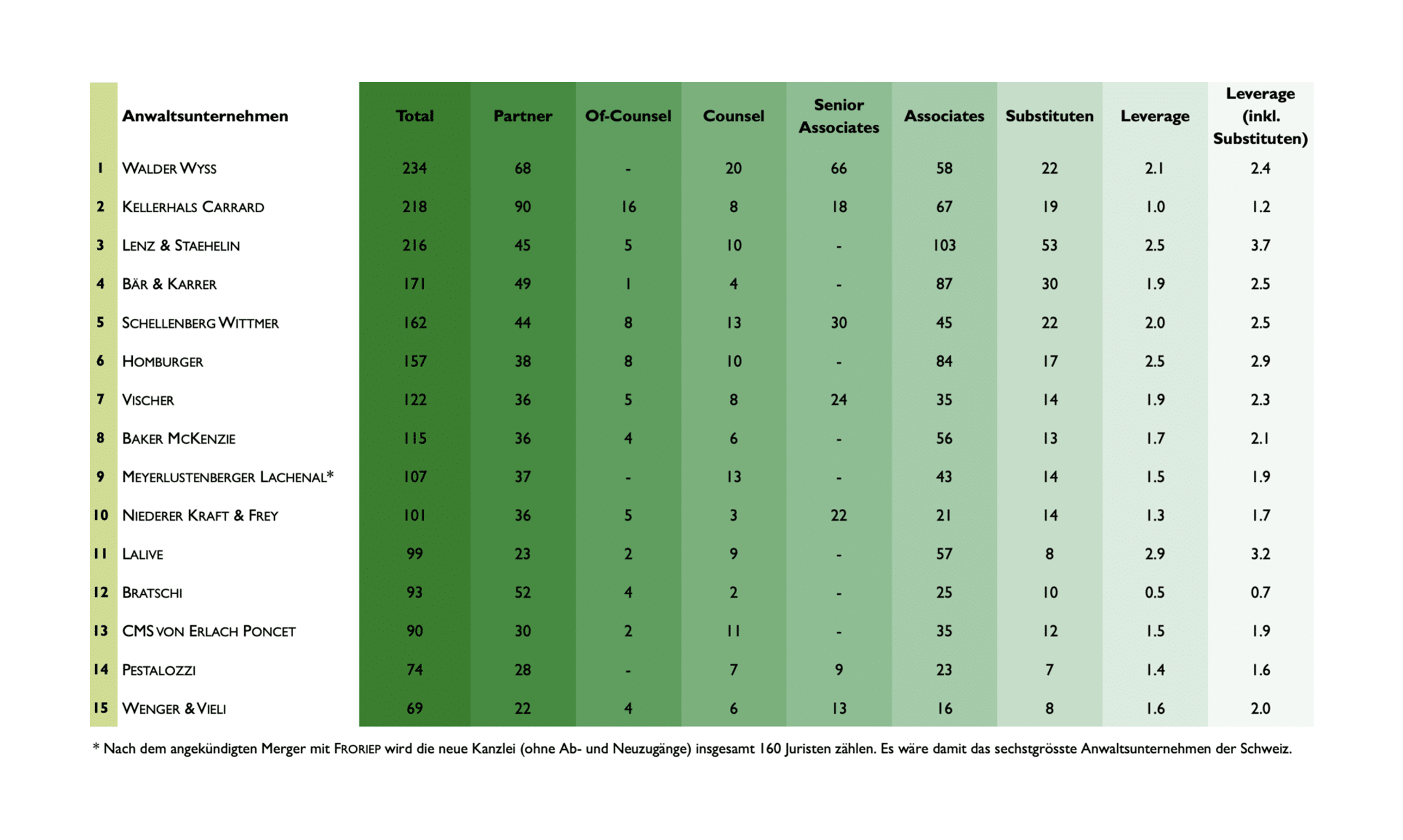Topics: Swiss law firms, staff composition, firm sizes.
Reading time: 2 minutes.
With 234 lawyers and substitutes, Walder Wyss is the largest Swiss law firm. If the non-legal staff is included, the law firm has become a large company that is no longer considered an SME (the limit according to the Federal Statistical Office is 250 employees). This applies to other large law firms in Switzerland besides Walder Wyss.

While some law firms suffered staff losses last year, the majority of large firms continued to expand their workforce. Thus, Swiss law firms are following the international trend of steady growth in the legal business. However, there are significant differences regarding staff composition. Two of these differences will be briefly addressed below: leverage and substitutes.
On the one hand, law firms differ greatly in terms of their leverage, i.e., the ratio of (equity) partners to other legal staff (a leverage of, for example, 2.0 means that there are 2 lawyers who are not partners for each partner). With 2.9 counsels and associates per partner, the leverage is highest at Lalive and almost six times higher than at Bratschi (0.5). When adding the substitutes, Lenz & Staehelin comes first with a ratio of one partner to a total of 3.7 counsels, associates, and substitutes. High leverage may be associated with a higher profit per partner, but automatically forces partners to do more acquisition to ensure their teams are adequately busy. This also requires more coordination, quality control, and administrative effort. However, for ambitious newcomers, this also means that a career path at Lalive, Lenz & Staehelin, or Homburger should be well thought out. Because a higher leverage can indicate a more selective admission process to the partnership and, due to the higher number of associates, lead to more competition among them.
In addition to large differences in leverage, law firms also position themselves differently when it comes to the use of law trainees, so-called substitutes. These are most strongly represented at Lenz & Staehelin, where there are well over 1.2 substitutes per partner, and these represent almost 25% of all legal professionals. The situation is very different at Bratschi, where there is only one substitute for five partners, or at Kellerhals Carrard, Lalive, Pestalozzi, and Walder Wyss, where substitutes make up less than 10% of the legal staff. Besides other selection criteria (some examples: is there rotation from department to department? Is one assigned to a partner or team or do the substitutes form a pool? Are internal bar exam preparations conducted?), aspiring substitutes would do well to keep these numbers in mind before sending their application.
The numbers are based on a count of the profiles available on the respective homepages (survey: January 10 to 14, 2021). Furthermore, partners also include principals, Of-Counsel also includes consultants and Senior Counsel, Senior Associates also include Managing Associates.
ABOUT THE AUTHOR
Dario Ramon Buschor studied Law & Economics at the University of St. Gallen before starting a doctoral program in the fall of 2018. Dario's research focuses on the management of law firms.
SOURCE
Published on Vista, the online magazine of the Executive School of the University of St.Gallen.
Direct link to the article.